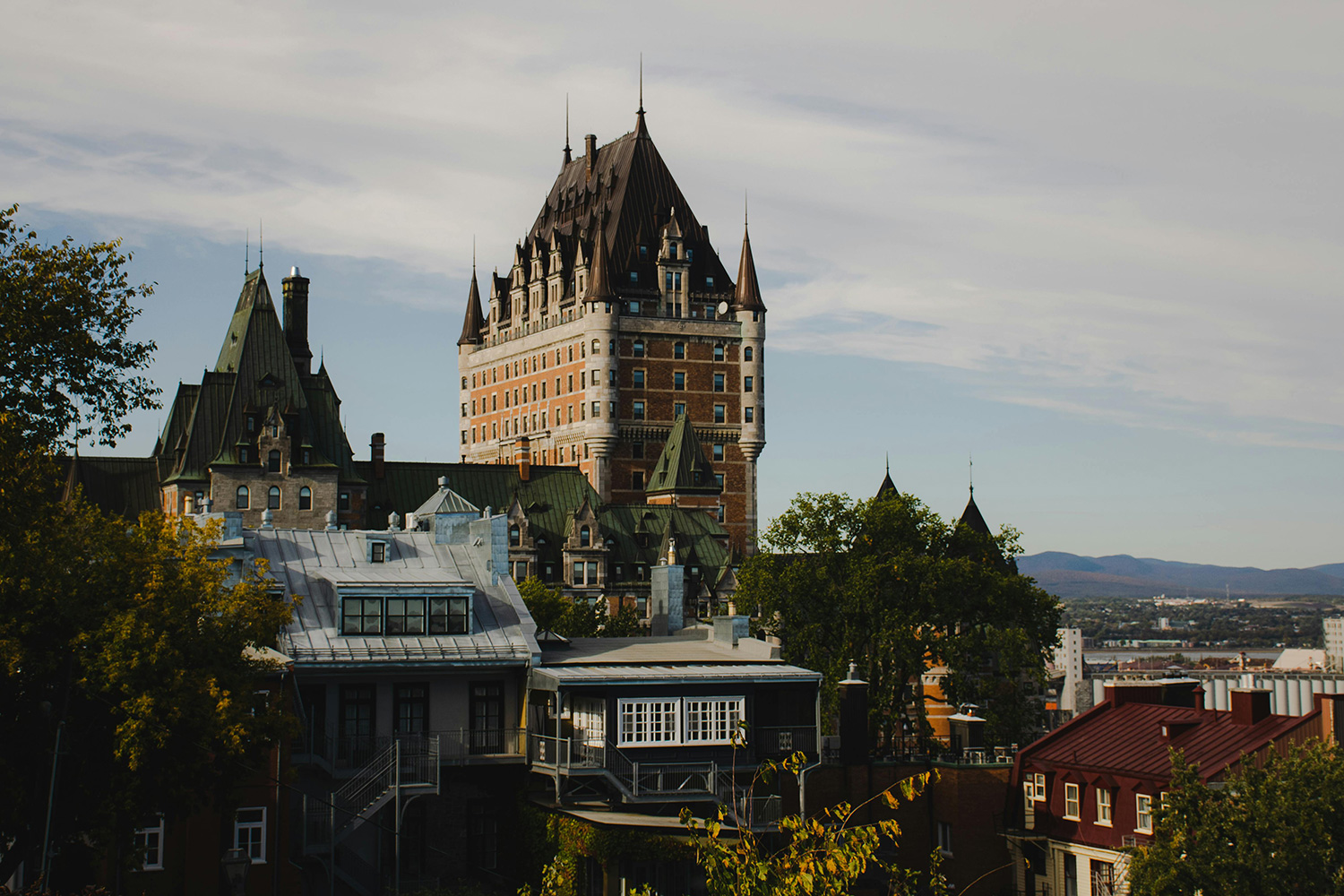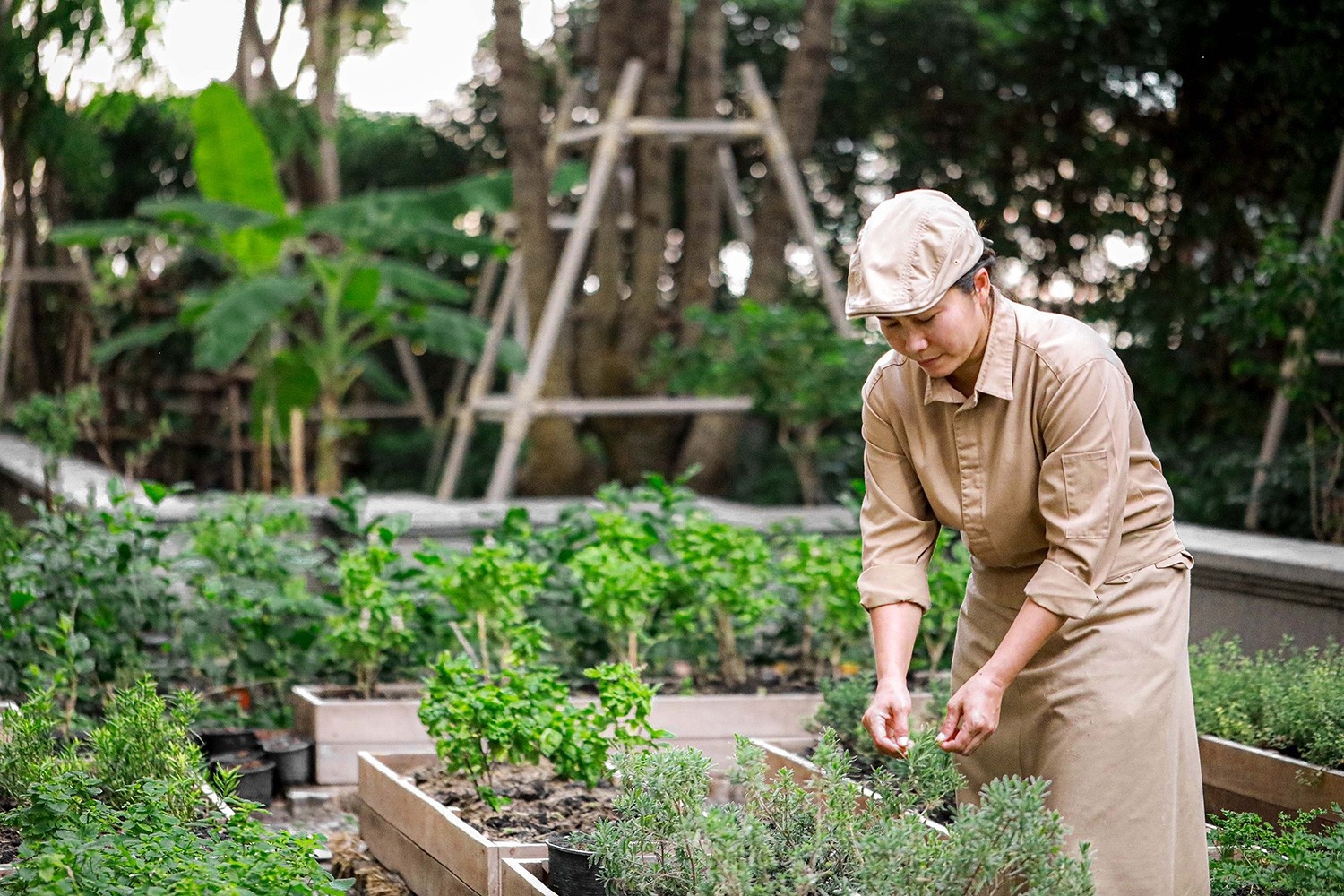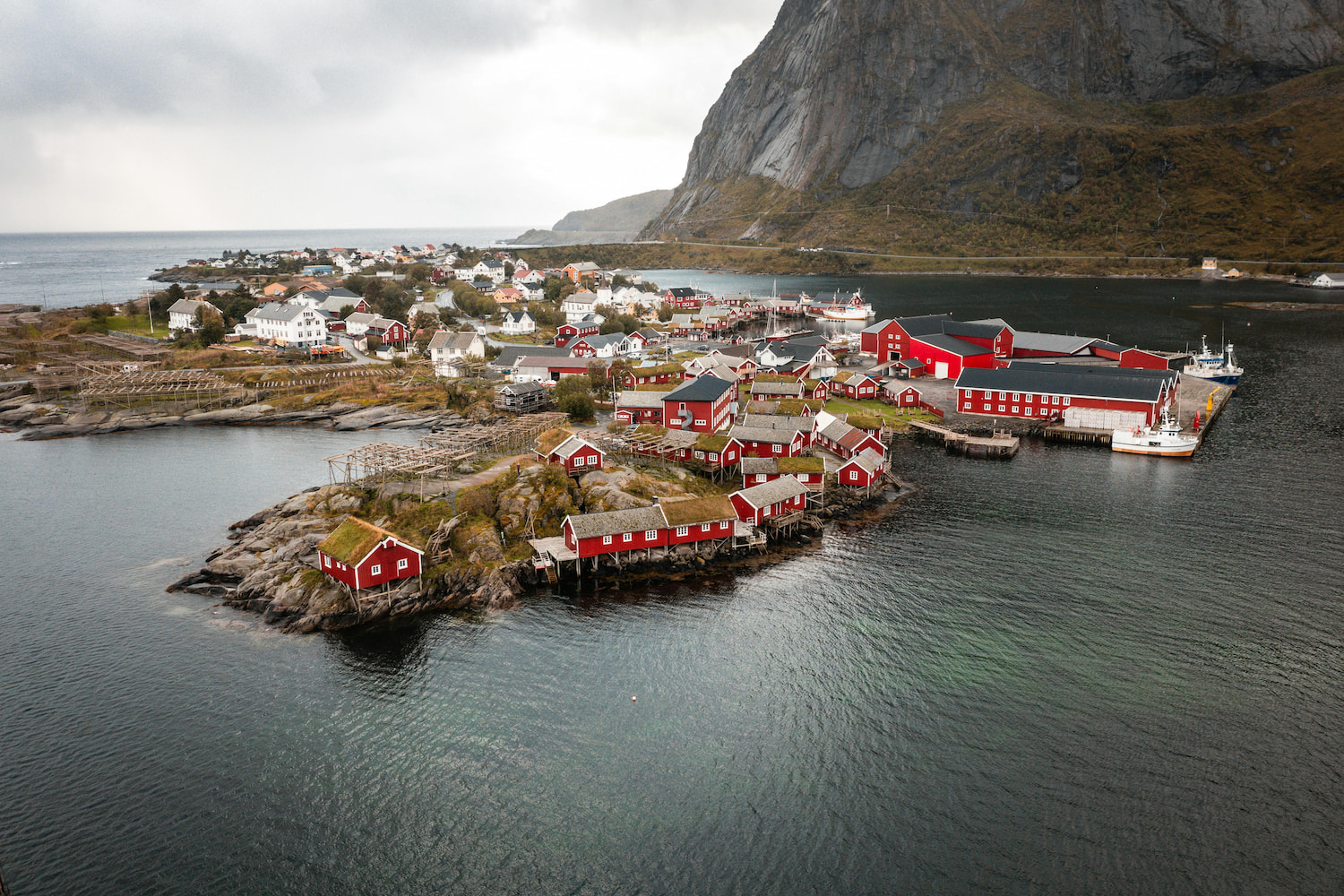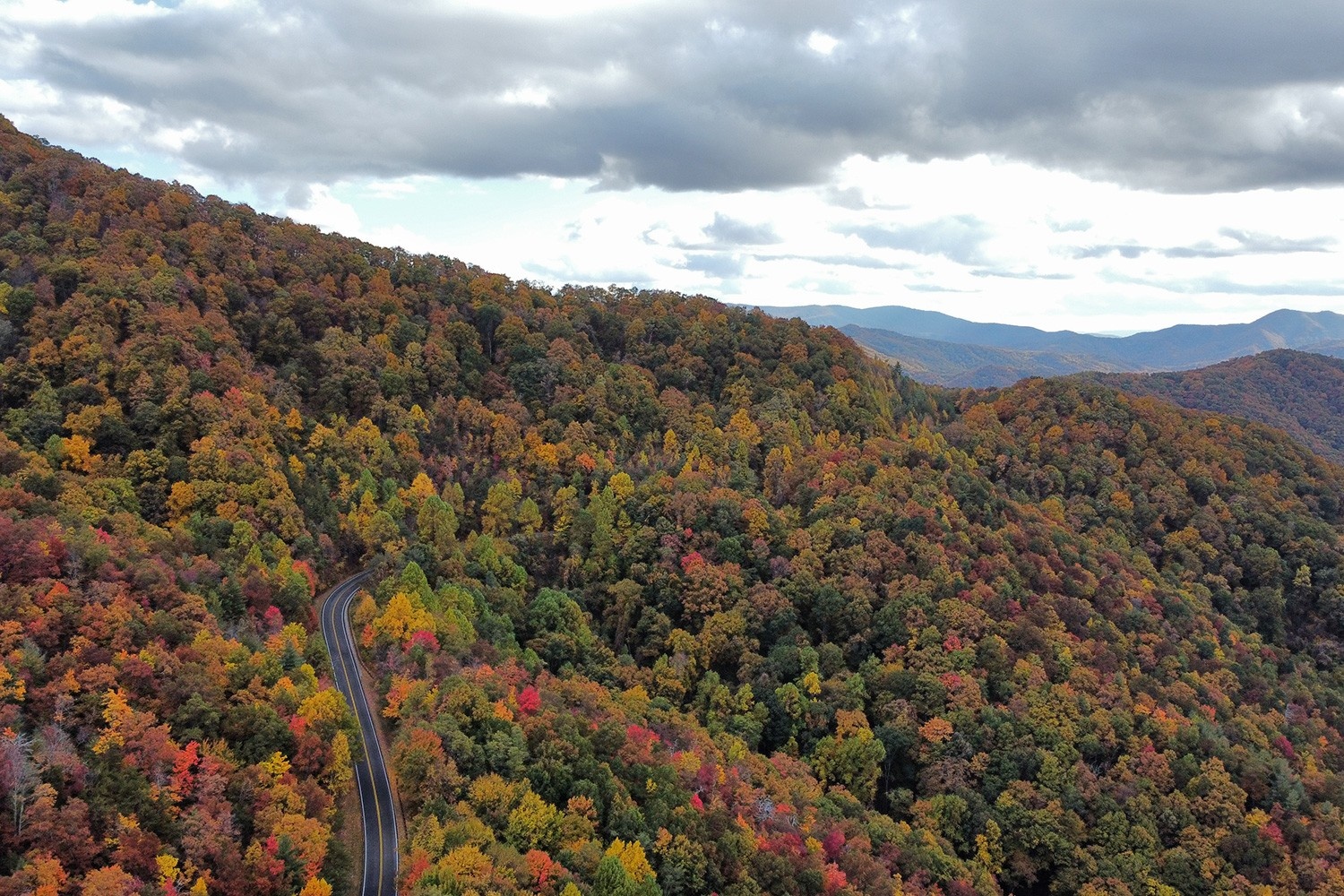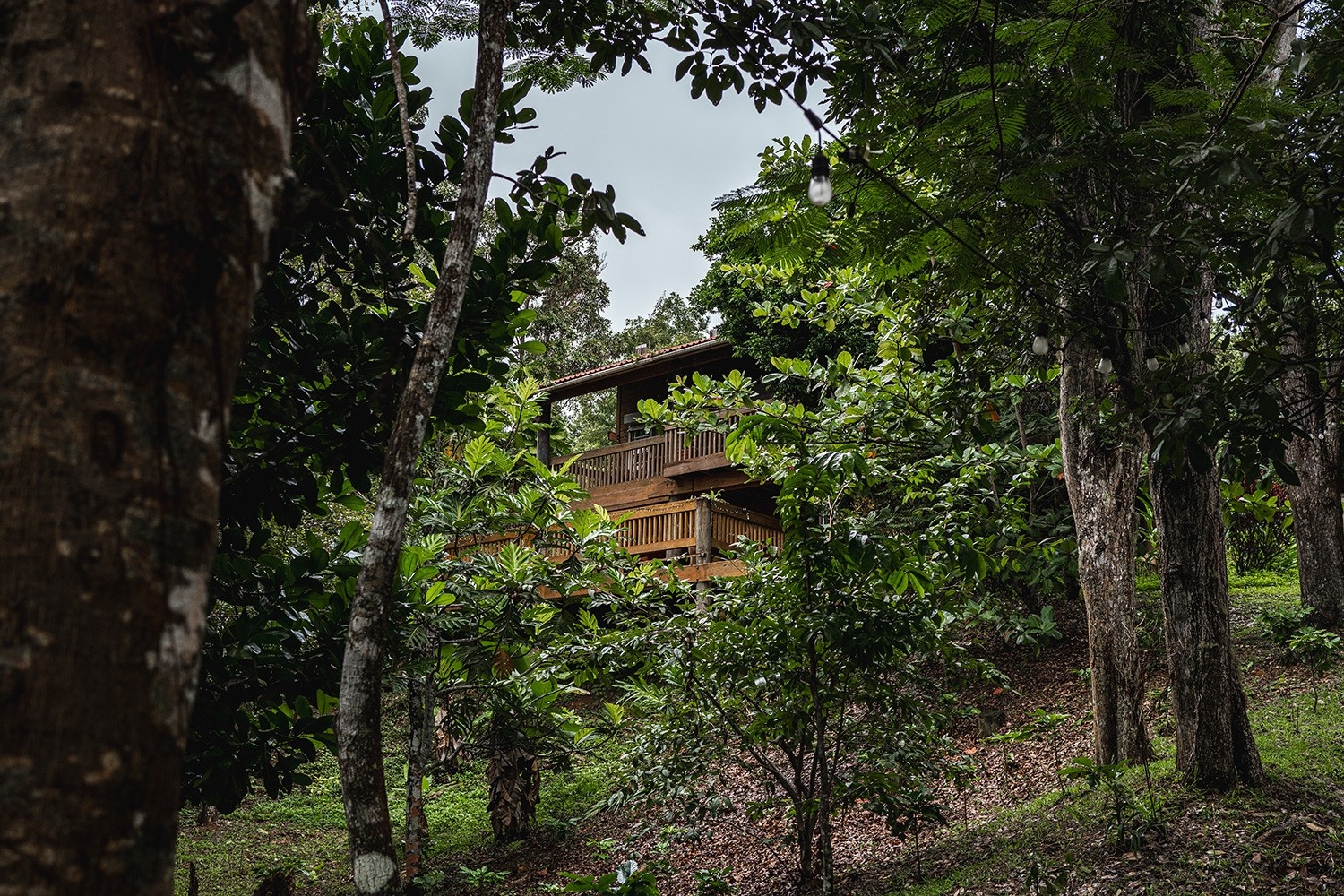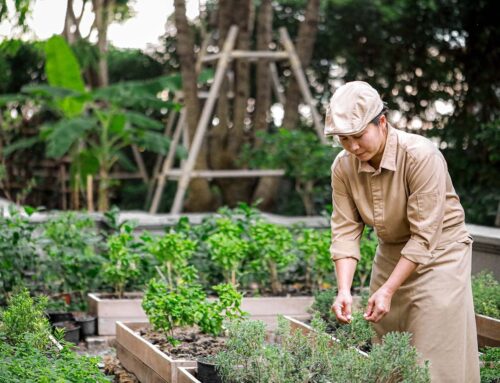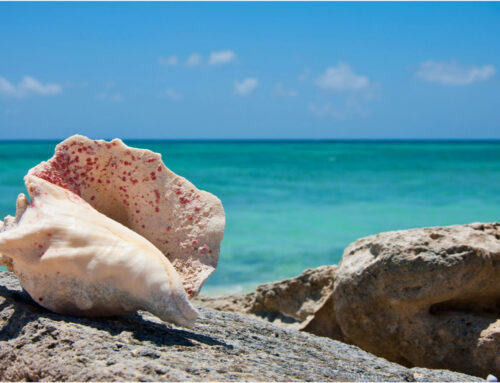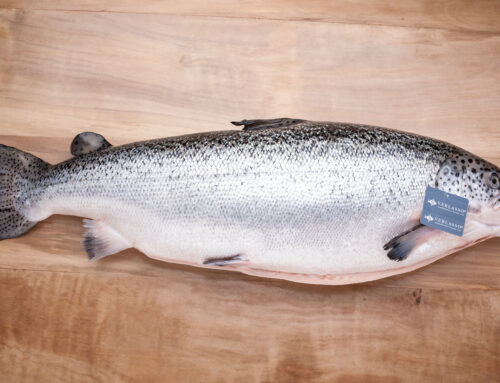“Exploring the outskirts of the city brings you closer to the sources of Québec’s culinary bounty.”
Québec City has always been a touchstone for me. In the years when I was raising my sons and dreaming of travel that always felt a bit too far, Québec City gave me that Old World flair I craved – and wanted to share with my kids. We drove in our minivan to stay in the walled city. We wandered the cobblestone streets, feasting on traditional Québecois food like tarte au sucre (sugar pie), tourtiere (a meat pie flavored with cinnamon, sage, and cloves), and their absolute favorite, poutine, French fries covered in local cheese curds and gravy. This was the Québec City I knew as a mom.
Now my kids are grown, but I still return. This time, I wanted to go beyond the classic dishes of past trips and see what else the province offered. I decided to spend five days, straying a bit out of the city to find some of the most inventive, delicious, and sustainable menus I’ve ever experienced.
From being the world’s biggest maple syrup producer to rearing livestock for cheese and meat, growing fruits and vegetables, and drawing on Indigenous knowledge to source edible and medicinal plants from the wild, Québec’s cuisine offers much more than poutine. Now I’m seeing Vieux Québec with nouvelle eyes.
Day One
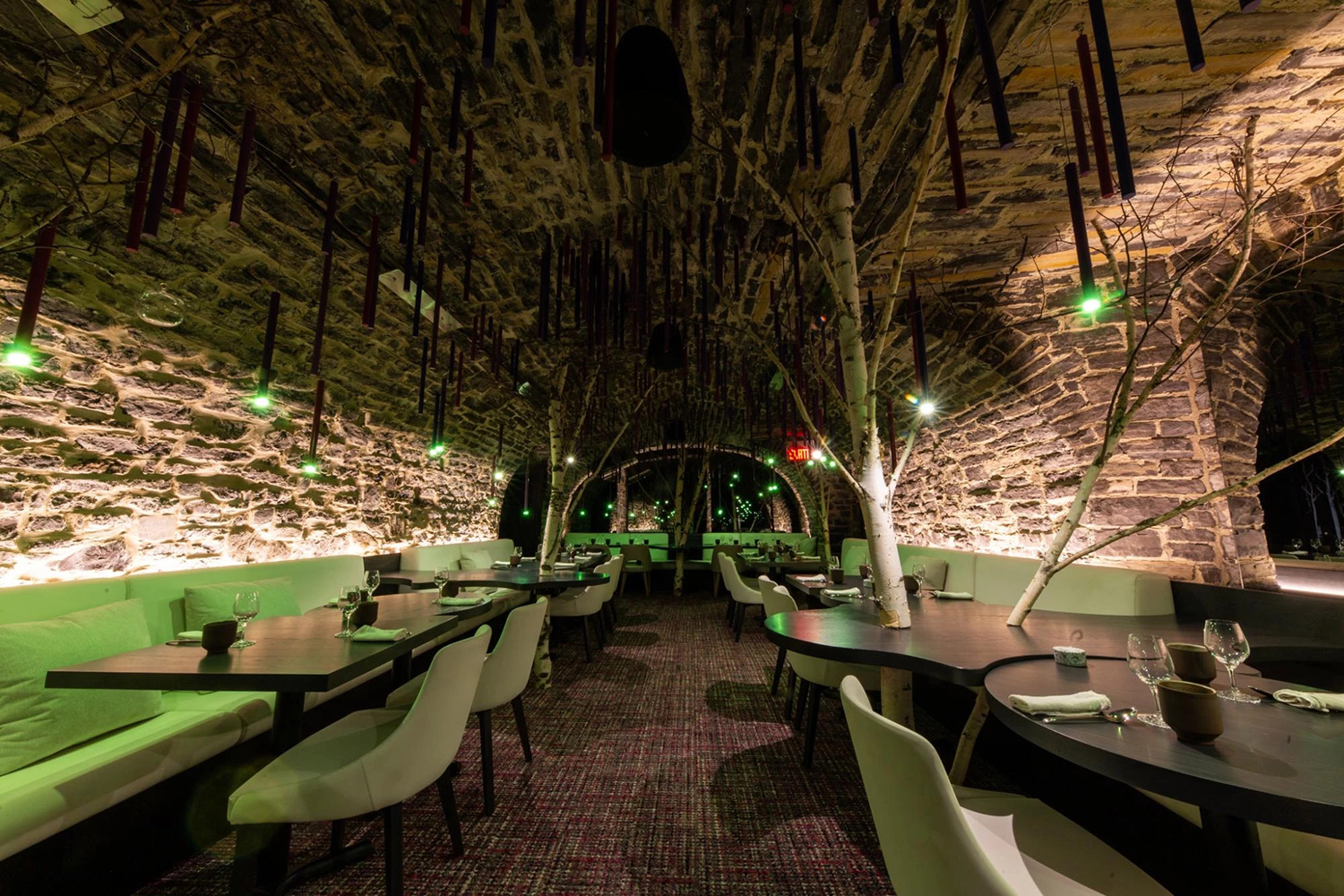
The dining room at La Taniere. Courtesy of La Taniere.
La Tanière³
I wanted to spend my first few nights inside the stone ramparts of Old Québec as a nod to past trips. I window-shopped along Rue du Petit-Champlain, helping myself to a goat milk soft-serve ice cream cone from Fromagerie Ferme Audet. I wanted to dine somewhere new, somewhere I would not have gone with my kids. Somewhere close, but also unique, and yes, a bit decadent. And so the very first restaurant I ate at was La Tanière³, a speakeasy-style 17th-century converted tannery in a discreet stone building. One needs a secret code to enter.
Chef François-Emmanuel Nicol is pushing for Québec City to join the Michelin Guide, and his menu makes a strong case. Every dish highlights fresh, local ingredients, including native plants rarely seen in fine dining. Think cocktails sweetened with sumac or gray pine oil, Québec sturgeon caviar, and tuna the chef catches himself in the Gaspé.
Guests start with appetizers and cocktails in a stone vault, served with near-surgical precision. Then, they’re guided to a dimly lit dining room for the main courses, and finally to a warm, intimate space for dessert.
Day Two

Monastère des Augustines at night. Courtesy of Monastère des Augustines.
Silent Breakfast at Monastère des Augustines
After my dinner and long, luxurious sleep the night before, I wanted something clean for breakfast. And I didn’t realize it at the time, but I also wanted a bit of quiet. Silence has long been a foreign concept as a single mom of four sons. After spending the next morning at a convent where the Augustine sisters have lived in cloistered silence until the ‘60s, consider me a convert.
The silent breakfast in Le Terroir Monastère des Augustines, convent-cum-wellness retreat, felt healing. Healthy eating is a core tenet, featuring locally-sourced, organic, and nutritious ingredients. Most products hail from within 93 miles (150 kilometers) of the monastery, but some are grown and made on the grounds. The wholesome homemade oatmeal, grainy breads, and fresh preserves tasted richer, better, more complex in the peace of a silent restaurant.
Fairmont Le Château Frontenac – Bistro Le Sam
After a day spent wandering outside the city, I was happy to head back for a bucket list item: dinner at Bistro Le Sam, the chic casual bistro with gorgeous Old City views in the historic Château Frontenac.
My sons and I used to marvel at the beautiful 19th-century castle rising up in the middle of the city, but we never went inside. I decided today we would change that. The menu reflected hearty Québecois fare with modern twists, but I delighted in their commitment to creating sharing boards.
The Québec cheese board, the appetizer board, a side of Sam’s excellent baby back ribs and seafood and cheese fritters for the table: this is a quintessential Québec experience, especially if you take the funicular back home to your hotel afterwards, as I did.
Day Three
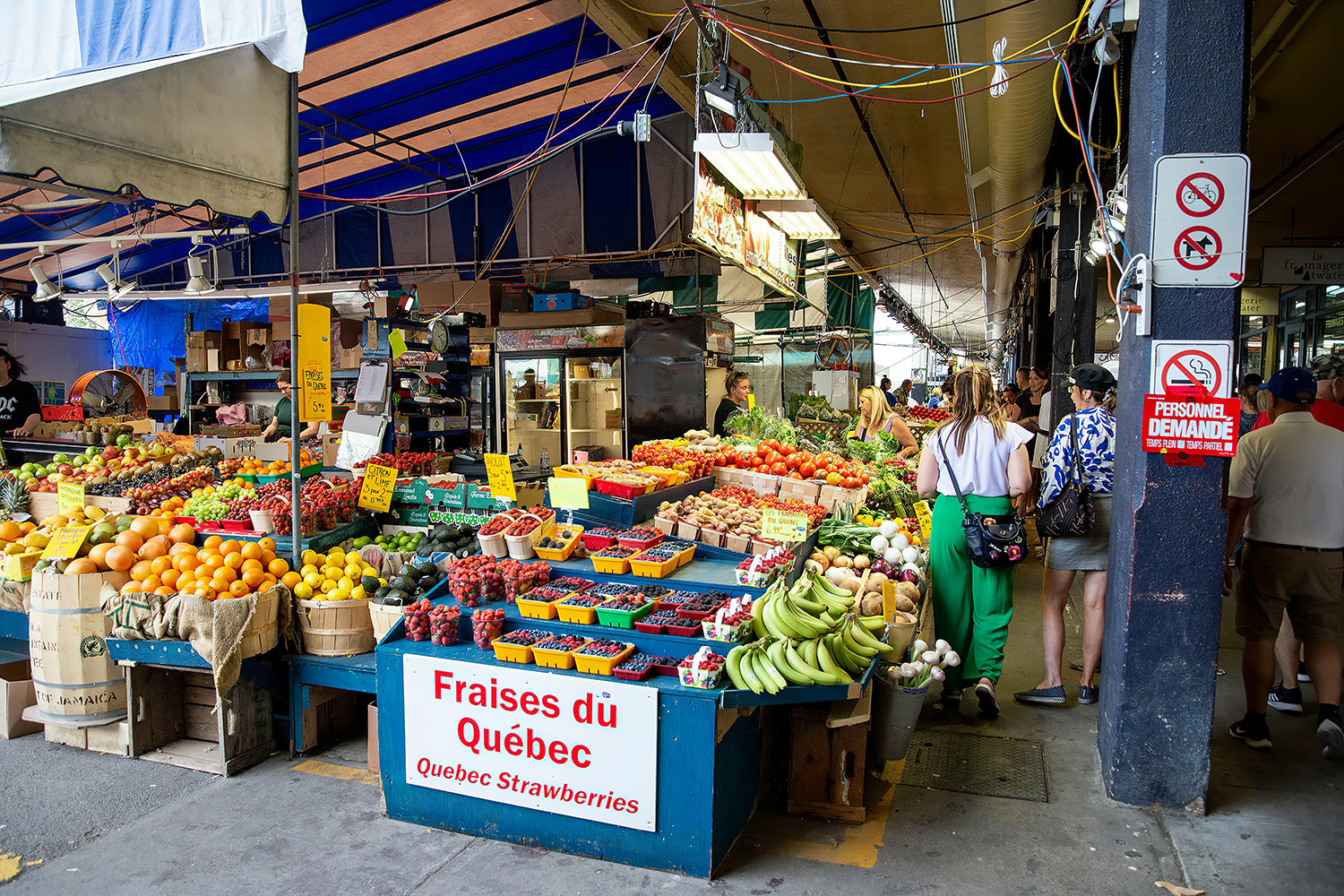
Quebec farmers markets. Courtesy of Pexels (Coldbeer).
Ile d’Orleans
The next day, I found myself on the short, scenic drive to Ile d’Orleans, the city’s island-based orchard. Located in the Saint Lawrence River, the island boasts vineyards and orchards, with farmers selling their wares at roadside stands and small shops. A sunny day on this island offers up all kinds of treats like a maple cream from Confiturie Tigadou. Then I headed to Polyculture Plante for some bread, fresh apples, and the famous “squeaky” cheese curds to eat outside in the sun with a view of Montmerency Falls.
Day Four
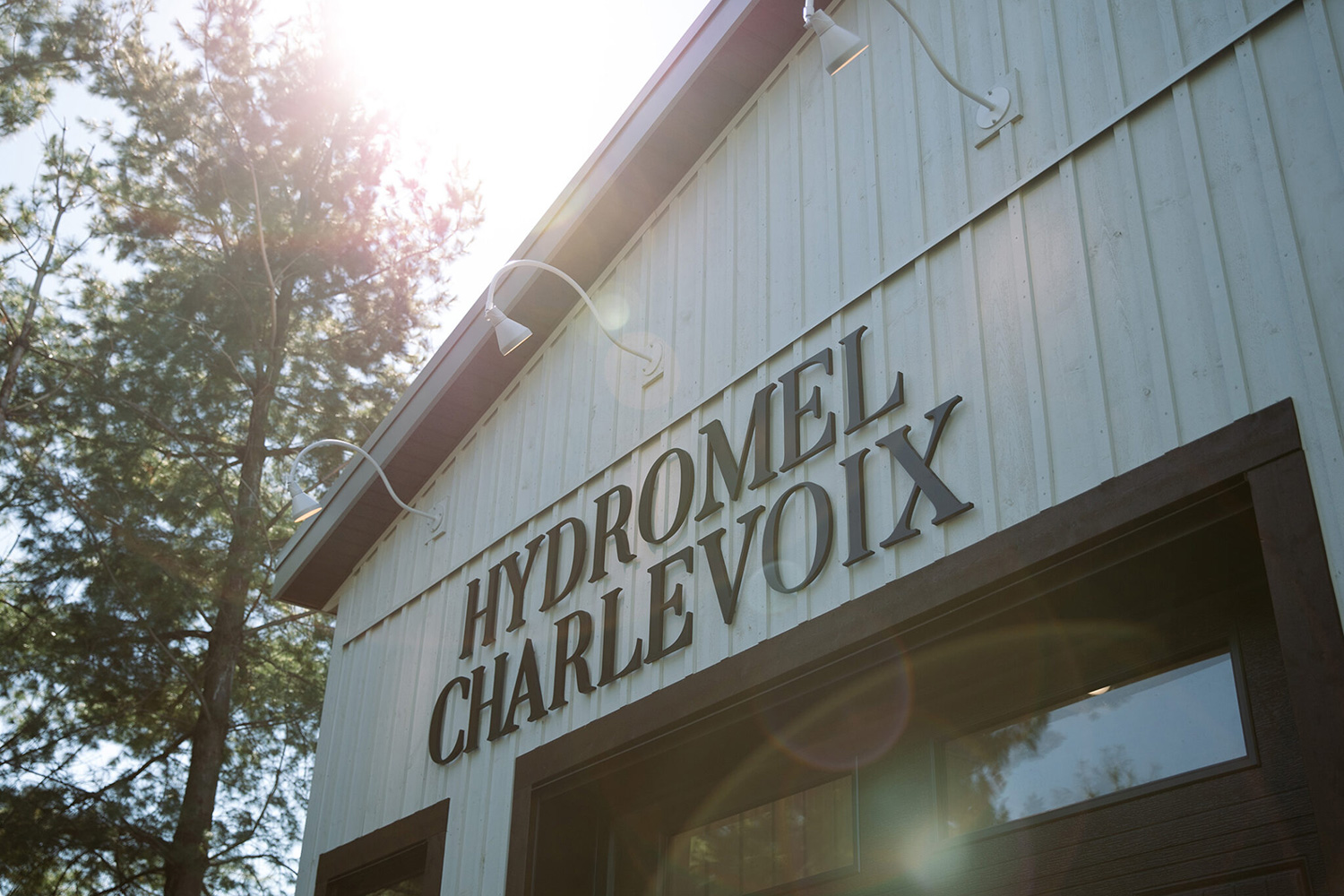
A sunny day trying honey-based drinks at Hydromel Charlevoix. Courtesy of Hydromel Charlevoix.
Hydromel Charlevoix
Exploring the outskirts of the city brings you closer to the sources of Québec’s culinary bounty. So the next day, I took the local VIA Rail train along the Saint Lawrence River for two hours to the small towns of Charlevoix and Baie-St-Paul. The railway views of the river, villages, and tiny chapels would have been enough thrill, but the destination exceeded expectations.
Beekeeping is a major industry in Canada, and in Québec in particular, urban beekeeping remains popular. That buzz for bees extends to the countryside. Boasting bee hives throughout the Charlevoix region, Hydromel Charlevoix offers tastings of their products like fortified red and white wines made with local honey, which you can sip as you tour the apiary. For anyone feeling passionate about keeping bees as a way to support conservation, you can take beekeeping classes on site and even buy a hive right here.
Day Five
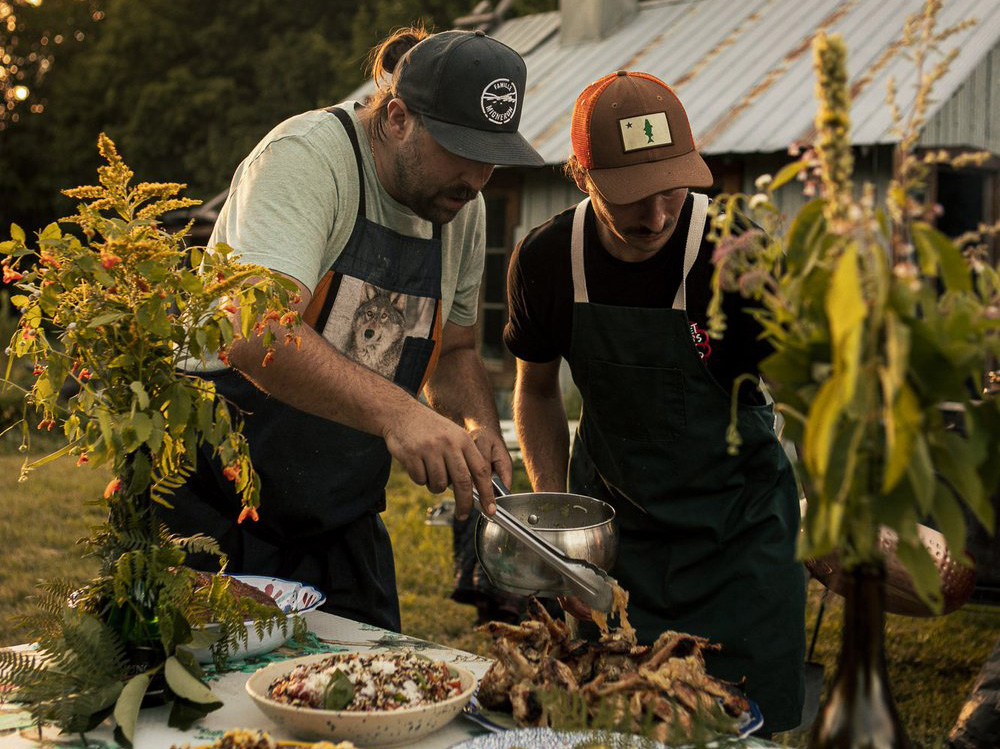
Al fresco dining at Faux Bergers. Courtesy of Faux Bergers.
Faux Bergers
On my final night, I wanted a more elemental connection to the land, and you can’t get much closer to it than dinner at Faux Bergers in Charlevoix. Set on the Migneron farm, the restaurant operates a small cheese shop and celebrates local producers with a nightly tasting menu announced by the chef in both French and English.
I dined among strangers and fellow food lovers, the quiet moments between courses feeling almost like communion. We all savored the same seven-course meal — salmon patates, tender chicken with foraged chaga mushrooms, Atlantic char, and fresh melon. More than just a meal, it was a near-religious experience: a visceral connection to place, season, and soil.
Where to stay

Courtesy of Auberge Saint Antoine
Auberge Saint-Antoine, in Québec City
As one of the oldest hotels in Québec City, Auberge Saint-Antoine also has the unique distinction of being a museum hotel. Snuggled into one of the most accessible neighborhoods in the city’s historic Old Port, Auberge Saint-Antoine offers 95 unique rooms and suites decorated with over 5,000 artifacts uncovered from an archaeological dig on the premises. Not to mention a stunning restaurant, lounge, spa, and a gym.
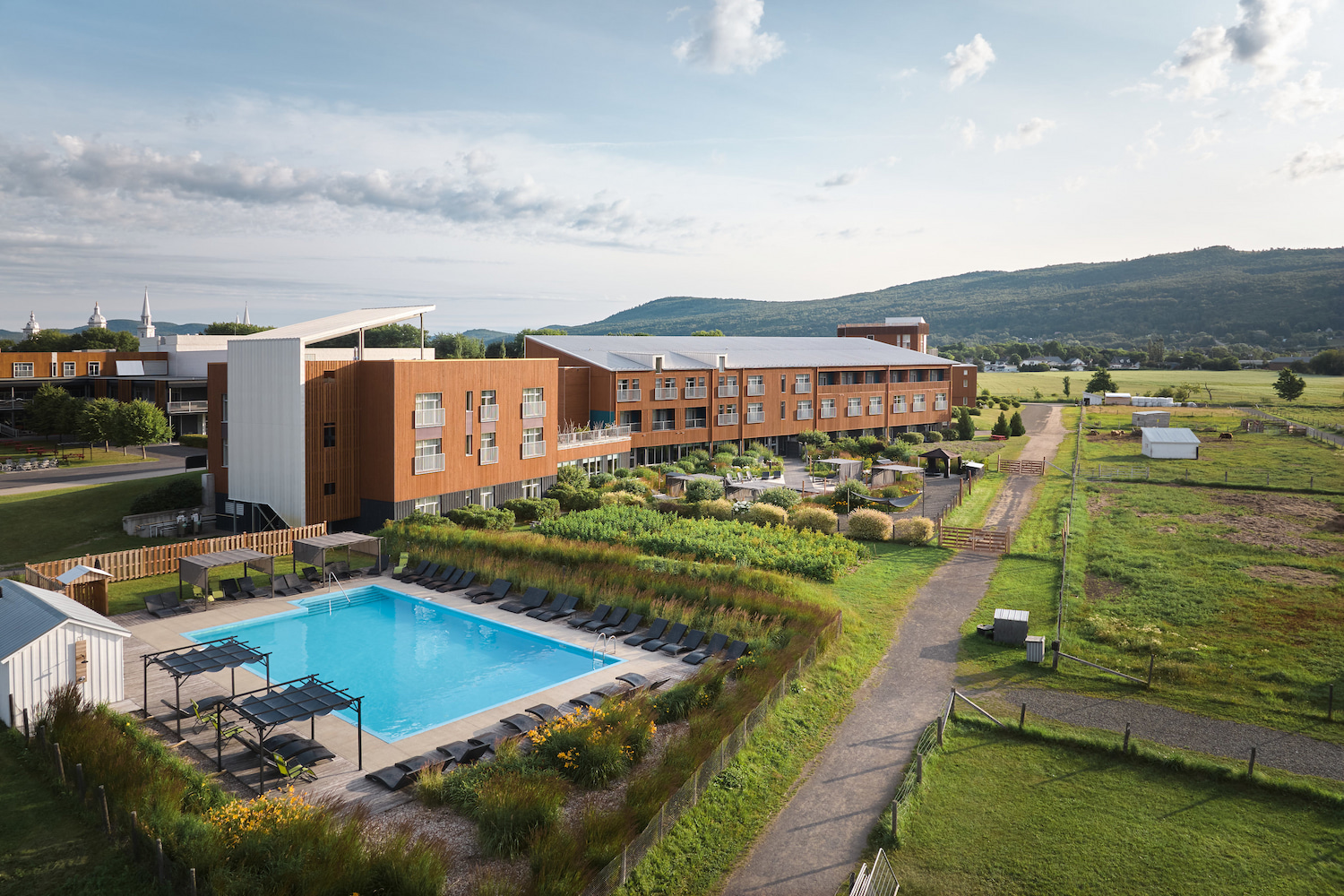
Courtesy of Hotel Spa Le Germain Charlevoix
Hôtel & Spa Le Germain Charlevoix, in Charlevoix
Beyond the convenient fact that the VIA Rail train to Charlevoix stops at the doorstep of Hôtel & Spa Le Germain Charlevoix, this place really did have everything you would want in a sustainable hotel. Hiking trails, an entire spa circuit complete with steam room and several pools, and hygge-style rooms with comfortable beds and views of the Charlevoix mountains. Plus, they have farm animals on site just grazing and looking peaceful and loved. A unique and restful stay within walking distance of downtown Baie-St-Paul.
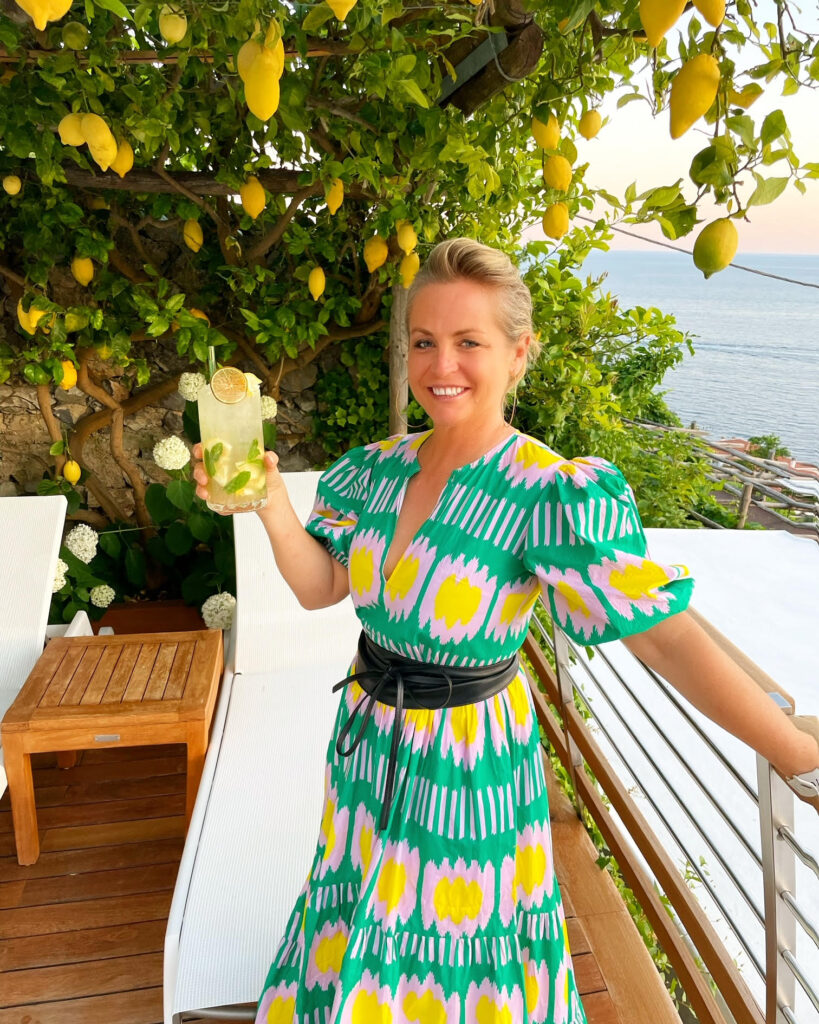
Founder and CEO of Azure Road, Lauren Mowery is a longtime wine, food, and travel writer. Mowery continues to serve on Decanter Magazine’s 12-strong US editorial team. Prior to joining Decanter, she spent five years as the travel editor at Wine Enthusiast. Mowery has earned accolades for her writing and photography, having contributed travel, drinks, food, and sustainability content to publications like Food & Wine, Forbes, Afar, The Independent, Saveur, Hemispheres, U.S. News & World Report, SCUBA Diving, Plate, Chef & Restaurant, Hotels Above Par, AAA, Fodors.com, Lonely Planet, USA Today, Men’s Journal, and Time Out, among others.
Pursuing her Master of Wine certification, she has also been a regular wine and spirits writer for Tasting Panel, Somm Journal, VinePair, Punch, and SevenFifty Daily. Mowery is a graduate of the University of Virginia and Fordham Law School, and she completed two wine harvests in South Africa.
Follow her on Instagram @AzureRoad and TikTok @AzureRoad


